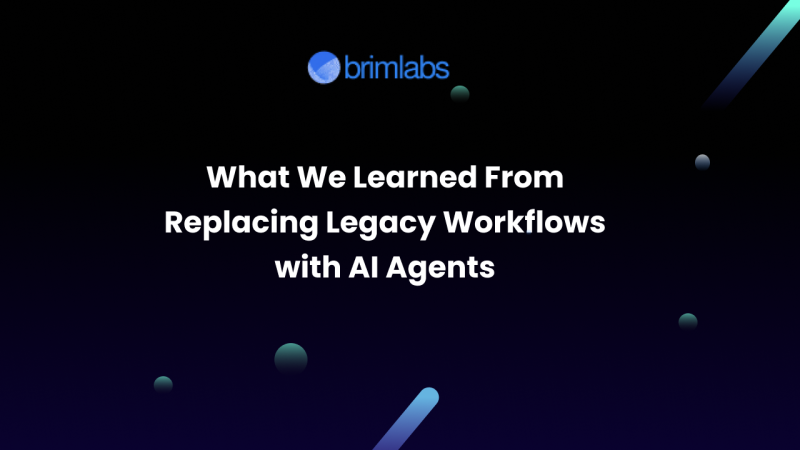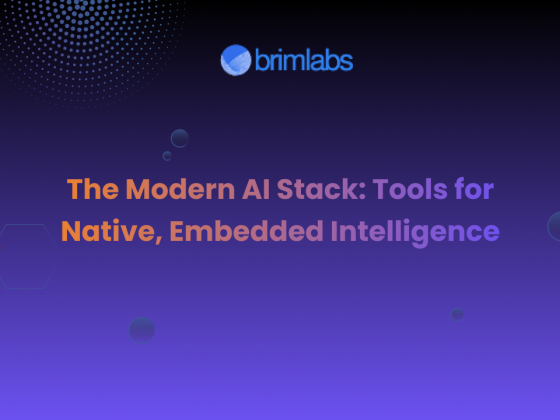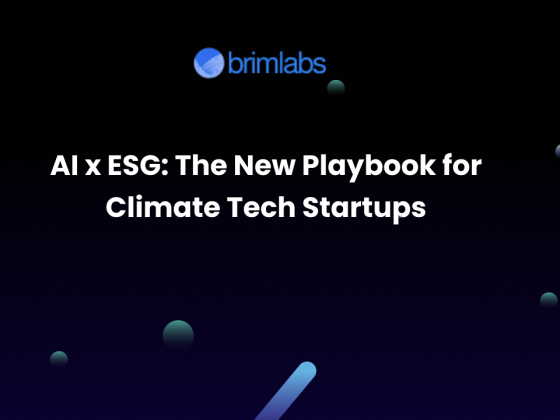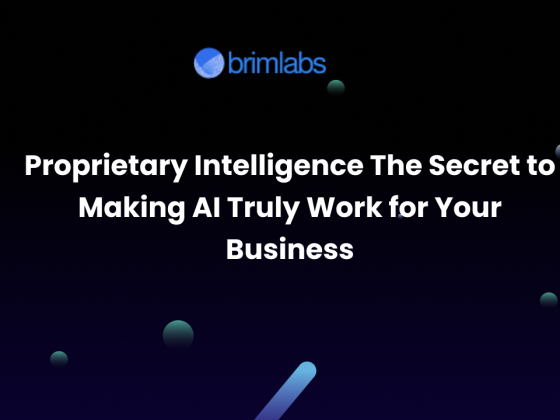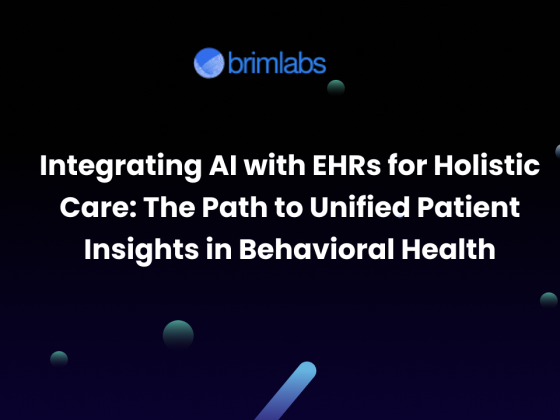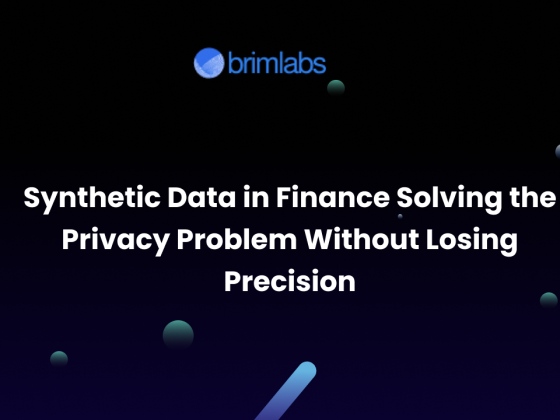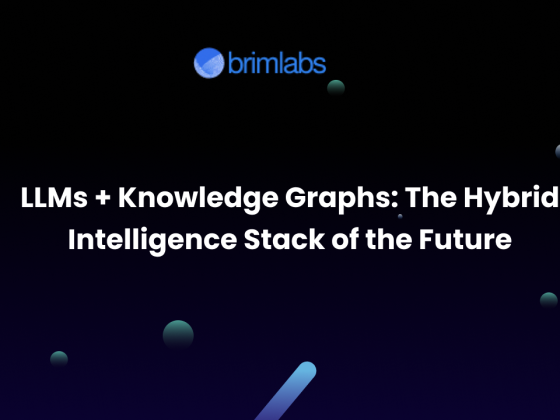Legacy Isn’t Just Old Code, It’s a Mindset
Every company has a legacy system.
Sometimes it’s an actual codebase from the 90s still powering mission-critical functions. But more often, it’s the way teams work, the stitched-together spreadsheets, the repetitive PDF downloads, the five-step approval process for one customer ticket.
At Brim Labs, we’ve spent the last two years helping companies replace these fragile, manual workflows with AI agents, purpose-built tools that can read, reason, and act across documents, systems, and conversations.
This isn’t a blog full of theory. It’s a behind-the-scenes look at what really happens when legacy processes get replaced by intelligent agents, the wins, the growing pains, and the systems thinking that has to evolve along the way.
1. Legacy Workflows Are Built for Repeatability, Not Resilience
Legacy workflows are optimized for stability and compliance. But in today’s world, adaptability beats perfection.
Across industries – mortgage, healthcare, insurance, and SaaS, we saw this pattern:
- Teams spent more time moving data than using it
- 80 percent of workflows relied on tribal knowledge (not documented anywhere)
- Each new tool added to the stack multiplied complexity
- Compliance checks slowed down to weeks due to lack of real-time insights
In one proptech project, just to generate a project plan for a building retrofit, teams had to:
- Locate and open 3 different energy audit PDFs
- Manually cross-reference government rebate programs
- Coordinate with 4 tools via email and Slack
We replaced this with a single AI agent powered by RAG that could:
- Extract structured data from scanned PDFs
- Understand government rules using LLM fine-tuning
- Generate plans and surface flags in under 5 minutes
Lesson: AI agents don’t just automate tasks. They restructure workflows around speed, context, and intelligence.
2. Your Documents Are the Real Database, Treat Them That Way
Most enterprise data doesn’t live in clean tables; it’s trapped in documents.
Invoices, contracts, clinical forms, insurance policies, customer requests, all stored in email threads, Dropbox folders, or SharePoint silos.
Before you build AI agents, you have to give them eyes and understanding.
We invested heavily in:
- OCR and layout-aware parsing for messy scans
- Embedding models that could capture legal, financial, or clinical semantics
- Vector stores that allowed contextual retrieval
- Fine-tuned prompts for summarization, Q&A, and reasoning
Example:
In a healthcare automation project, we trained an agent to:
- Read 50+ types of lab orders and diagnostic PDFs
- Normalize terminologies (“CBC” vs. “Complete Blood Count”)
- Integrate with the clinic’s EHR for scheduling and result routing
This cut manual workload by 70 percent and reduced claim denials due to incorrect test codes.
Lesson: If your agent can’t “see” and understand your documents, you’re not solving the real bottleneck.
3. Agents Are Not Tools, They’re Team Members
We used to think of AI tools as silent background helpers. But agents change that dynamic; they actively collaborate with your team.
Well-designed agents:
- Take initiative (flag missing data or delays)
- Explain their reasoning (why a claim was flagged)
- Escalate edge cases instead of blindly executing
But this also means they must be trusted.
What we learned:
- Agents must show transparency in decision-making
- Confidence scores, citations, and conversational interfaces build trust
- Business users must always have a way to override or correct agent behavior
In one insurance deployment, we built agents to triage auto claims. Human reviewers still handled high-risk cases but the agents reduced average case handling time by 6x and ensured every decision was auditable.
Lesson: Design agents as collaborators, not black-box executors. And always keep a human-in-the-loop when stakes are high.
4. AI Agents Break the “One Tool, One Function” Model
In legacy environments, each tool does one thing. You have a CRM, an HRIS, a helpdesk, a reporting suite, and then a Zapier duct tape to hold them together.
Agents work differently. They cut across systems.
A single agent can:
- Read Salesforce notes
- Pull policy terms from a Notion doc
- Trigger a Slack message
- Send an email, log it in HubSpot, and update an Airtable
This creates a unified layer of intelligence that makes the system feel alive, context-aware, responsive, and modular.
Real-world result:
An AI agent built for a climate-fintech client connected their CRM, email inbox, analytics stack, and incentive program logic. It reduced response time to investor queries by 80 percent, while constantly learning from each interaction.
Lesson: Treat agents like orchestration layers, not siloed apps. They’re glue and engine in one.
5. You Don’t Need to Kill Your Legacy Stack to Start
This is the biggest misconception we hear:
“We’ll modernize after we sunset the old system.”
That’s backward. Most of our successful agent deployments were done on top of existing systems. No rewrites. No migrations. No downtime.
We used agents as overlays:
- They read data from existing tools using APIs, exports, or scraping
- Wrote back to tools through exposed endpoints
- Interacted with users via Slack, web UIs, or email
This “wrap-around” strategy allowed:
- Fast pilot deployment (2 to 4 weeks)
- Buy-in from non-technical users
- A/B testing of workflows without disruption
Lesson: The smart way forward is augment-first, not replace-first. Wrap your legacy, then gradually rebuild behind the scenes.
6. The Business Wins Are Real, but Only with the Right Foundations
Everyone wants AI-driven cost savings. But it’s not plug-and-play.
For AI agents to succeed at scale, we had to get the foundations right:
- Clear data access and tagging
- Centralized knowledge bases
- Structured exception handling
- Version control for prompts and memory modules
- Feedback loops from real users
When we got this right, the impact was massive:
- 50 to 80 percent reduction in operational workload
- Faster regulatory compliance reporting
- Real-time decision support for frontline teams
- Continuous learning loop built into operations
Lesson: AI agents don’t live in isolation. Their intelligence is only as good as your underlying data and process design.
Final Takeaways: What It Really Takes to Replace Legacy Workflows
Replacing legacy workflows with AI agents isn’t a tech migration, it’s a cultural transformation.
You need to shift from:
- Rigid systems → Adaptive intelligence
- Rule-based logic → Reasoning-based agents
- Monolithic workflows → Modular, evolving automations
- One-time builds → Continuous learning systems
At Brim Labs, we’ve seen this evolution firsthand across industries. And we’re convinced the companies that win the next decade will be the ones who treat AI agents not as tools, but as teammates.
Agents that know your business. Never forget. That gets better with every interaction. That’s the new workflow stack.
Curious about applying AI agents in your org? Let’s explore how we can co-build it with speed, trust, and clear ROI. Book a strategy call with Brim Labs

